
Overview
Greenhouses and the agriculture industry are closely related sectors that play a significant role in modern food production and plant cultivation. Greenhouses are controlled environments designed to create an optimal climate for growing plants. They are typically constructed with transparent materials, such as glass or plastic, that allow sunlight to enter while trapping heat. This controlled environment enables farmers and growers to cultivate a wide range of crops, including fruits, vegetables, flowers, and ornamental plants, throughout the year, regardless of external weather conditions.
Depending on specific features and functions, GAO Tek’s hygrometers are sometimes referred to as humidity meters, hygrographs, moisture meters, dew point meters, relative humidity gauges, psychrometers (specifically for some types of hygrometers), moisture sensors, humidity detectors, humidistats (when used in control systems).
GAO Tek’s hygrometers have the following applications in greenhouses and agriculture industry:
- Optimal Growing Conditions: GAO’s Hygrometers help greenhouse operators and farmers monitor and maintain the ideal humidity levels for specific crops. Different plants have varying humidity requirements, and hygrometers ensure these conditions are met to promote healthy growth.
- Disease Prevention: GAO Tek Maintaining proper humidity levels is crucial for preventing the development of fungal diseases. Hygrometers assist in early detection of conditions that may encourage the growth of pathogens, allowing for timely intervention.
- Water Management: GAO Tek Hygrometers can be integrated into irrigation systems to ensure that plants receive the appropriate amount of moisture. This prevents over- or under-watering, which can be detrimental to crop health and resource efficiency.
- Energy Efficiency: GAO Greenhouse operators can use hygrometers to optimize heating and ventilation systems. By accurately measuring humidity levels, they can adjust these systems to conserve energy while maintaining the desired climate.
- Seed Germination: GAO’s Maintaining the right humidity is critical for successful seed germination. Hygrometers help ensure that the humidity conditions in seedling trays or germination chambers are optimal for seed viability and early growth.
- Harvest Timing: GAO Tek In agriculture, hygrometers can aid in determining the best time to harvest certain crops, especially those that need specific drying conditions, such as grains or tobacco. This ensures the harvested produce reaches its peak quality.
- Storage And Preservation: GAO After harvest, hygrometers are used to monitor humidity levels in storage facilities like warehouses and silos. Proper humidity control prevents spoilage and helps maintain the quality of stored crops.
- Research And Experimentation: GAO’s Hygrometers are essential tools for researchers and agronomists studying plant responses to humidity variations. They are used in controlled experiments to understand how different humidity levels affect plant growth.
- Climate Data Logging: GAO Continuous monitoring of humidity levels is important for record-keeping and trend analysis. Hygrometers equipped with data logging capabilities can help greenhouse managers and farmers track humidity variations over time.
More information on hygrometers and their applications in other industries can be found on this page.
This category page lists related products.
Environmental Test Instruments
GAO Tek’s targeted markets are North America, particularly the U.S., Canada, Mexico, and Europe. Hence, in addition to English, this website gaotek.com is offered in other major languages of North America and Europe such as Spanish, French, German, Italian, Polish, Ukrainian, Romanian, Russian, Dutch, Turkish, Greek, Hungarian, Swedish, Czech, Portuguese, Serbian, Bulgarian, Croatian, Danish, Finnish, Norwegian, Slovak, Catalan, Lithuanian, Bosnian, Galician, Slovene, Latvian, Estonian, Welsh, Icelandic, and Irish.
Complying With Greenhouses And Agriculture Industry Standards
GAO Tek’s hygrometers comply or help our customers comply with the greenhouses and agriculture industry standards such as:
- ASTM International
- ISO (International Organization for Standardization)
- EN (European Norm)
- ASABE (American Society of Agricultural and Biological Engineers)
- USDA (United States Department of Agriculture)
- NIST (National Institute of Standards and Technology)
- IEC (International Electrotechnical Commission)
- Industry-specific Associations
Complying With Government Regulations
GAO Tek’s hygrometers comply or help our customers comply with the U.S. government regulations such as:
- USDA (United States Department of Agriculture)
- EPA (Environmental Protection Agency)
- OSHA (Occupational Safety and Health Administration)
- FDA (Food and Drug Administration)
- NIST (National Institute of Standards and Technology)
- State Agriculture Departments (Varies by state)
GAO Tek’s hygrometers comply or help our clients comply with the Canadian regulations such as:
- CFIA (Canadian Food Inspection Agency)
- Health Canada
- Workplace Safety and Health Authorities (Varies by Province)
- Measurement Canada
- Provincial Agricultural Departments (Varies by Province)
GAO Tek’s hygrometers comply or help our clients comply with the Mexican regulations such as:
- SADER (Secretaría de Agricultura y Desarrollo Rural)
- SENASICA (Servicio Nacional de Sanidad, Inocuidad y Calidad Agroalimentaria)
- SEMARNAT (Secretaría de Medio Ambiente y Recursos Naturales)
- STPS (Secretaría del Trabajo y Previsión Social)
- PROFECO (Procuraduría Federal del Consumidor)
- NOMs (Normas Oficiales Mexicanas)
GAO Tek’s hygrometers comply or help our clients comply with the European regulations such as:
- European Union (EU)
- EU Common Agricultural Policy (CAP)
- ISO Standards (European adoption)
- National Agricultural Departments (Varies by Country)
- EU Member State Regulations (Varies by Country)
- EU Environmental Regulations
- Product Safety Regulations (EU-wide and National)
Case Studies of Hygrometers in Greenhouses And Agriculture Industry
Hygrometers are sometimes called as humidity meters, hygrographs, moisture meters, dew point meters, relative humidity gauges, psychrometers (specifically for some types of hygrometers), moisture sensors, humidity detectors, humidistats (when used in control systems).
Here are some practical examples of using hygrometers in greenhouses and agriculture industry:
Crop Health And Disease Management: Case studies could focus on how hygrometers are used to maintain optimal humidity levels to prevent fungal diseases in crops like tomatoes, cucumbers, or strawberries in Northeastern greenhouses.
Precision Agriculture in Vineyards: Research how hygrometers aid in monitoring humidity for wine grape cultivation in the Northeast, ensuring that the microclimates within vineyards are ideal for grape quality and yield.
Organic Farming: Investigate how organic farms in the Northeast use hygrometers to regulate humidity for organic crops, complying with organic farming standards.
Microgreen Production: Case studies can explore how hygrometers are employed in the production of microgreens in urban agriculture settings in cities like New York or Boston.
Hydroponic Systems: Analyze how hygrometers play a crucial role in maintaining the humidity levels required for hydroponic vegetable cultivation in controlled environments.
Greenhouse Energy Efficiency: Examine how the use of hygrometers as part of automated climate control systems contributes to energy efficiency in Northeastern greenhouses, especially during cold winters.
Climate Change Adaptation: Investigate how hygrometers help Northeastern farmers adapt to changing climate patterns and extreme weather events, such as increased rainfall or humidity.
Orchard Management: Explore how hygrometers are utilized in apple and fruit orchards in the Northeast to prevent mold and fungal growth during the growing season.
Corn And Soybean Farming: Investigate how hygrometers are employed in monitoring and controlling humidity levels in greenhouses or indoor facilities for seedling production in the Midwest’s large-scale corn and soybean farming operations.
Controlled Environment Agriculture (CEA): Analyze how hygrometers play a critical role in maintaining optimal humidity levels for CEA crops like lettuce, herbs, and microgreens in the Midwest, especially during extreme weather conditions.
Hygrometers in Hydroponics: Research the use of hygrometers in hydroponic systems for cultivating vegetables like tomatoes and peppers in indoor and greenhouse settings in the Midwest.
High-Tunnel Farming: Investigate how hygrometers contribute to successful high-tunnel farming operations for specialty crops such as berries and cut flowers in the Midwest.
Wine Grape Cultivation: Examine how hygrometers are utilized in vineyards across the Midwest for managing humidity levels to ensure high-quality grape production for wineries.
Greenhouse Energy Efficiency: Explore case studies on how hygrometers are integrated into automated climate control systems to improve energy efficiency and reduce heating and cooling costs in Midwest greenhouses.
Fungal Disease Management: Analyze how hygrometers are employed for early detection and prevention of fungal diseases in crops like wheat, barley, and oats in the Midwest.
Hemp And CBD Production: Investigate how hygrometers assist Midwest farmers in maintaining the ideal humidity conditions for hemp and CBD production, ensuring compliance with legal regulations.
Cotton Farming: Investigate how hygrometers are used to monitor humidity levels in cotton gins and storage facilities in the South, ensuring optimal conditions for cotton fiber quality and preservation.
Poultry Farming: Analyze how hygrometers play a role in maintaining humidity in poultry houses in the South to ensure the health and comfort of chickens and other poultry.
Tobacco Cultivation: Examine how hygrometers are employed in tobacco curing and storage facilities in Southern states to control humidity and temperature, critical for tobacco leaf quality.
Pecan Orchards: Research how hygrometers contribute to the management of humidity and temperature in pecan orchards, ensuring optimal growing conditions for this important Southern crop.
Vegetable Production: Investigate how hygrometers are used in the South for vegetable production in open fields and high tunnels to manage humidity and reduce the risk of diseases.
Hygrometers in Greenhouses: Analyze how hygrometers are integrated into greenhouse climate control systems for growing crops like tomatoes, peppers, and cucumbers in the South’s challenging climate.
Hydroponic And Aquaponic Systems: Examine the use of hygrometers in hydroponic and aquaponic systems for cultivating leafy greens and herbs in the Southern region, especially during hot and humid weather.
Viticulture: Research how hygrometers are utilized in vineyards in the South to manage humidity and temperature for wine grape production.
Tropical Fruit Orchards: Investigate how hygrometers assist in the management of humidity and microclimates in tropical fruit orchards in the Southern states, including citrus and avocado groves.
Marijuana Cultivation: Investigate how hygrometers are used in the controlled indoor environments of legal marijuana cultivation facilities in the Western states to optimize humidity levels for cannabis growth.
Fruit Orchards: Analyze how hygrometers assist in managing humidity and microclimates in fruit orchards, such as apple and cherry orchards, in the Western region to ensure fruit quality and minimize diseases.
Vineyard Management: Examine how hygrometers are employed in vineyards across the Western states for monitoring and controlling humidity levels to enhance wine grape production.
High-Altitude Crop Cultivation: Analyze the use of hygrometers in high-altitude agricultural settings in the Western region, where humidity and temperature conditions can vary significantly.
Almond And Walnut Orchards: Research how hygrometers contribute to the successful management of humidity and microclimates in almond and walnut orchards, which are prevalent in the Western states.
Forest And Fire Management: Investigate how hygrometers are used in forestry and fire management in the Western states to monitor humidity levels and assess fire risk.
Hygrometers in Greenhouse Climate Control: Investigate how hygrometers are integrated into greenhouse climate control systems in Canada to maintain optimal humidity levels for various crops, such as tomatoes, cucumbers, and peppers.
High-Value Crop Cultivation: Examine how hygrometers are used in the cultivation of high-value crops like cannabis in Canada, especially in controlled indoor environments where precise humidity control is crucial.
Potato Storage: Investigate how hygrometers are employed in potato storage facilities in Canada to control humidity and prevent tuber rot during long-term storage.
Hygrometers in Vineyards: Analyze the use of hygrometers in Canadian vineyards to monitor and manage humidity levels for wine grape production.
Precision Agriculture: Examine how hygrometers contribute to precision agriculture practices in Canada, particularly in terms of optimizing humidity for various crops in open fields.
Fruit Orchards: Investigate the use of hygrometers in Canadian fruit orchards, such as apple and pear orchards, to manage humidity and microclimates for improved fruit quality.
Climate Change Adaptation: Analyze case studies related to how hygrometers are used in Canadian agriculture to adapt to changing climate conditions, including increased humidity and temperature variations.
Hygrometers in Greenhouse Crop Production: Investigate how hygrometers are utilized in Mexican greenhouses to maintain optimal humidity levels for crops like tomatoes, peppers, and cucumbers.
High-Value Horticultural Crops: Analyze the use of hygrometers in the cultivation of high-value horticultural crops, such as strawberries and berries, in Mexico’s controlled environments.
Tropical Fruit Orchards: Examine how hygrometers contribute to the management of humidity and microclimates in Mexican tropical fruit orchards, including mango, avocado, and citrus groves.
Hygrometers in Agave Cultivation: Research how hygrometers are employed in agave cultivation for the production of tequila and mezcal in Mexico, where humidity control is essential.
Maize And Bean Farming: Analyze how hygrometers are used in the cultivation of staple crops like maize and beans in Mexico, especially in regions with varying humidity levels.
Fungal Disease Management: Examine case studies on how hygrometers are employed for early detection and prevention of fungal diseases in Mexican crops like coffee, cocoa, and vanilla.
Organic Farming Practices: Analyze the role of hygrometers in organic farming practices in Mexico, including compliance with organic farming standards and sustainable agriculture.
Viticulture: Examine how hygrometers are utilized in European vineyards to monitor and manage humidity levels for wine grape production.
Hygrometers in Aquaponic And Hydroponic Systems: Investigate how hygrometers contribute to humidity control in hydroponic and aquaponic systems for growing vegetables and herbs in water-based environments.
Microclimate Management: Investigate the role of hygrometers in managing microclimates within larger agricultural operations, such as orchards, to optimize humidity for crop health.
Integrated Pest Management: Analyze how hygrometers are used as part of integrated pest management strategies in European agriculture to reduce the risk of fungal diseases and pests.
GAO RFID Inc. RFID Hardware , a sister company of GAO Tek Inc., is ranked as a top 10 RFID supplier in the world. Its RFID, BLE, and IoT products have also been widely used in greenhouses and agriculture industry.
Use of Hygrometers With Leading Software And Cloud Services in Greenhouses And Agriculture Industry
GAO Tek has used or has facilitated its customers to use GAO’s hygrometers with some of the leading software and cloud services in their applications. Examples of such leading software and cloud services include:
- Priva
- Hoogendoorn
- HortiMaX
- Grodan e-Gro
- Horticontrol
- AWS IoT
- Microsoft Azure IoT
- Agworld
- FarmLogs
- Microsoft Excel
- MATLAB
- Python (with data analysis libraries)
- SPSS
- SAS
- CropSyst
- DSSAT
- AWS IoT Core
- Azure IoT
- Google Cloud IoT
- Google Cloud BigQuery
- AWS Analytics (including Amazon Redshift and Amazon QuickSight)
- Microsoft Azure Analytics (including Azure Data Lake Analytics and Azure Machine Learning)
GAO Tek’s hygrometers and their applications in other industries are listed on this page.
Other related products can be found at this category page.
Meeting Customers’ Demands
Large Choice of Products
In order to satisfy the diversified needs of their corporate customers, GAO Tek Inc. and its sister company GAO RFID Inc. together offer a wide choice of testing and measurement devices, network products, RFID, BLE, IoT, and drones.
Fast Delivery
To shorten the delivery to our customers, GAO has maintained a large stock of its products and is able to ship overnight within the continental U.S. and Canada, and fast delivery to Mexico and Europe from the nearest warehouse.
Local to Our Customers
We are located in both the U.S. and Canada. We travel to customers’ premises if necessary. Hence, we provide a very strong local support to our customers in North America, particularly the U.S., Canada and Mexico and Europe. Furthermore, we have built partnerships with some integrators, consulting firms and other service providers in different cities to further strengthen our services. Here are some of the service providers in greenhouses and agriculture industry we have worked with to serve our joint customers:
- Accenture
- Deloitte
- IBM Global Business Services
- PwC (PricewaterhouseCoopers)
- Cognizant
- Capgemini
- Wipro
- HCL Technologies
- Trimble Agriculture
- John Deere
- Granular (Corteva Agriscience)
- Iteris
- The Climate Corporation (Bayer)
- Conservis
- Topcon Agriculture
- Blue River Technology (John Deere)
- Raven Industries
- AgJunction
- Online Business Directories
- Industry Associations
- Networking Events
- Online Search
- Consult with Agricultural Suppliers
- Professional Networks
GAO Has Many Customers in Greenhouses And Agriculture Industry
The products from both GAO Tek Inc. and GAO RFID Inc. have been widely used in greenhouses and agriculture industry by many customers, including some leading companies. Here is more information on applications of GAO RFID Inc.’s products in greenhouses and agriculture industry.
Agriculture, Forestry & Fisheries | RFID Solutions
Here are some of GAO’s customers in greenhouses and agriculture industry:
- BrightFarms
- Gotham Greens
- NatureSweet
- Houweling’s Group
- Driscoll’s
- Freight Farms
- Eurofresh Farms
- Mastronardi Produce
- Pure Flavor
- AeroFarms
- Lipman Family Farms
- Sunset Produce (Mastronardi Produce)
- Lakeside Produce
- Red Sun Farms
- Agros Produce
- BerryMex
- Syngenta
- Hortilux Schréder
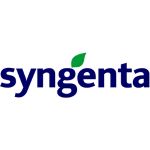

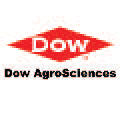

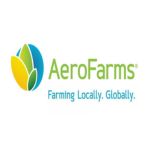
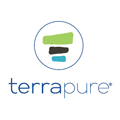

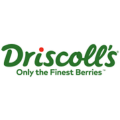
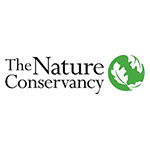
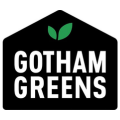
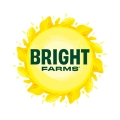
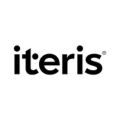
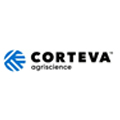
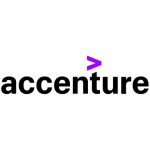




Contact Us
If you are interested in our products, services or partnering with us, please feel free to contact us by filling out this form:
or email us at sales@gaotek.com
